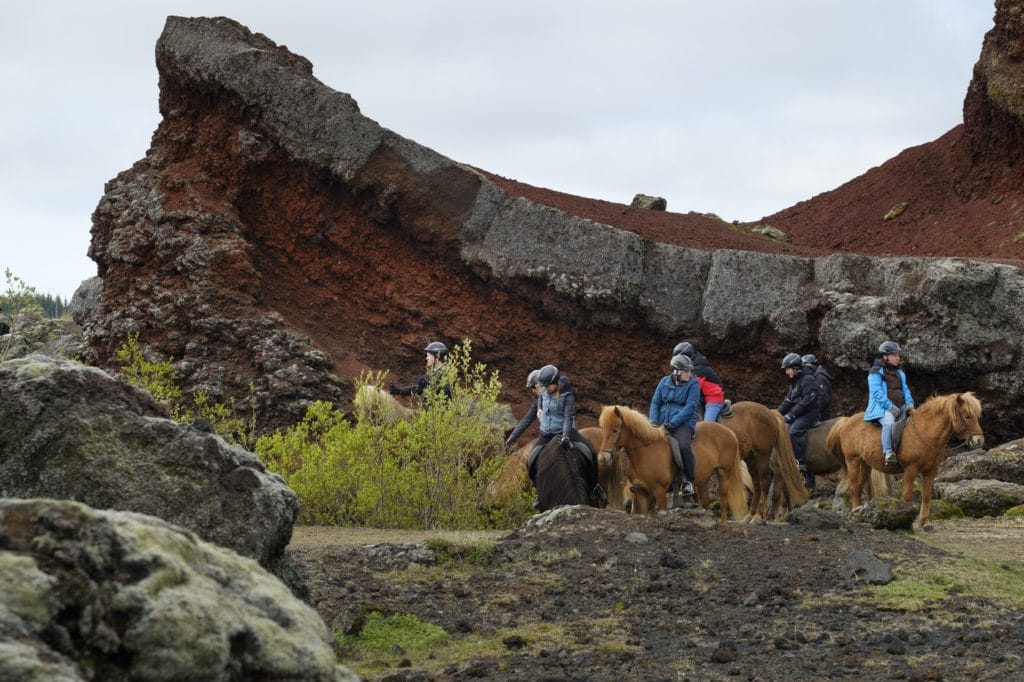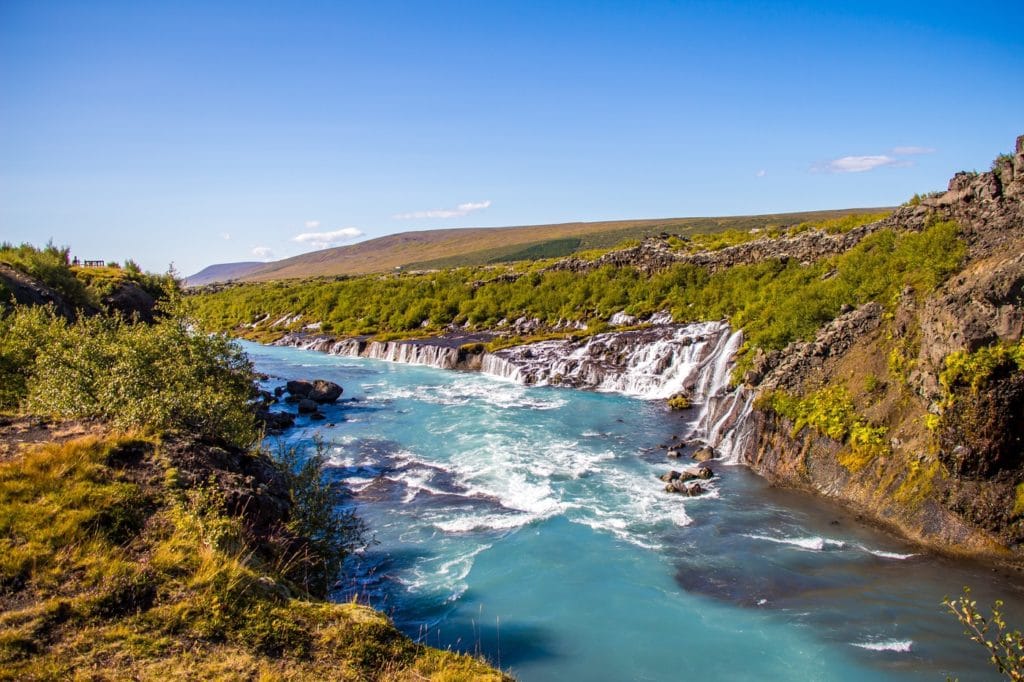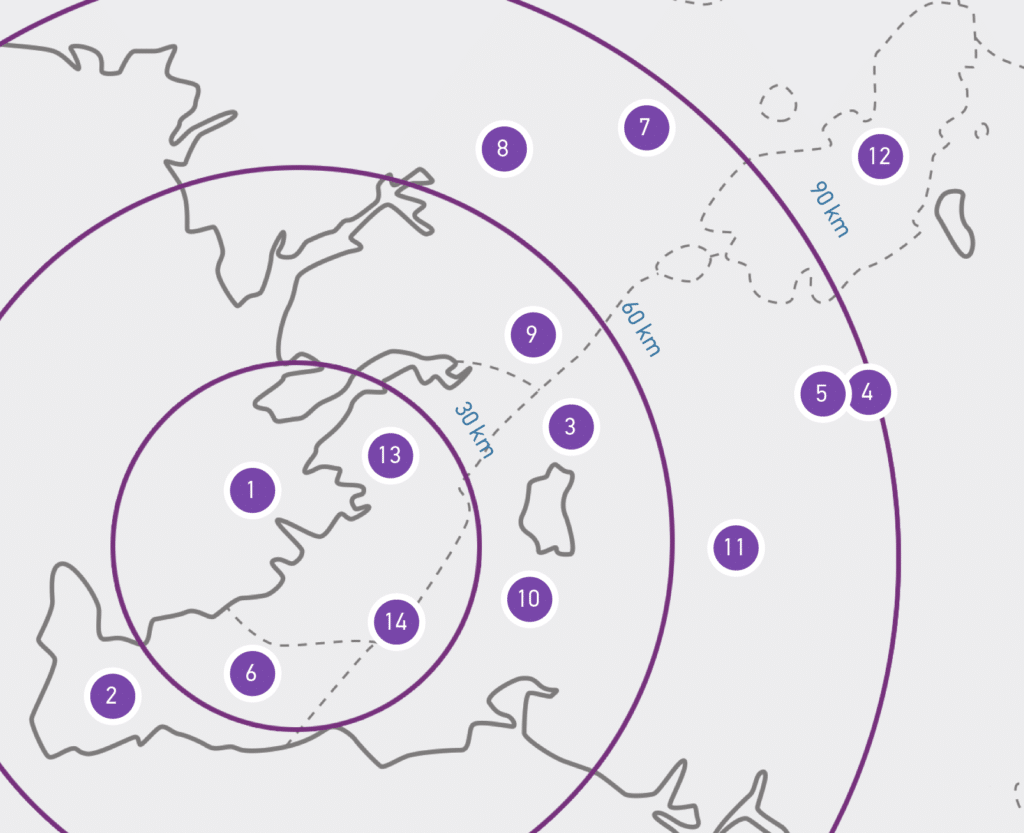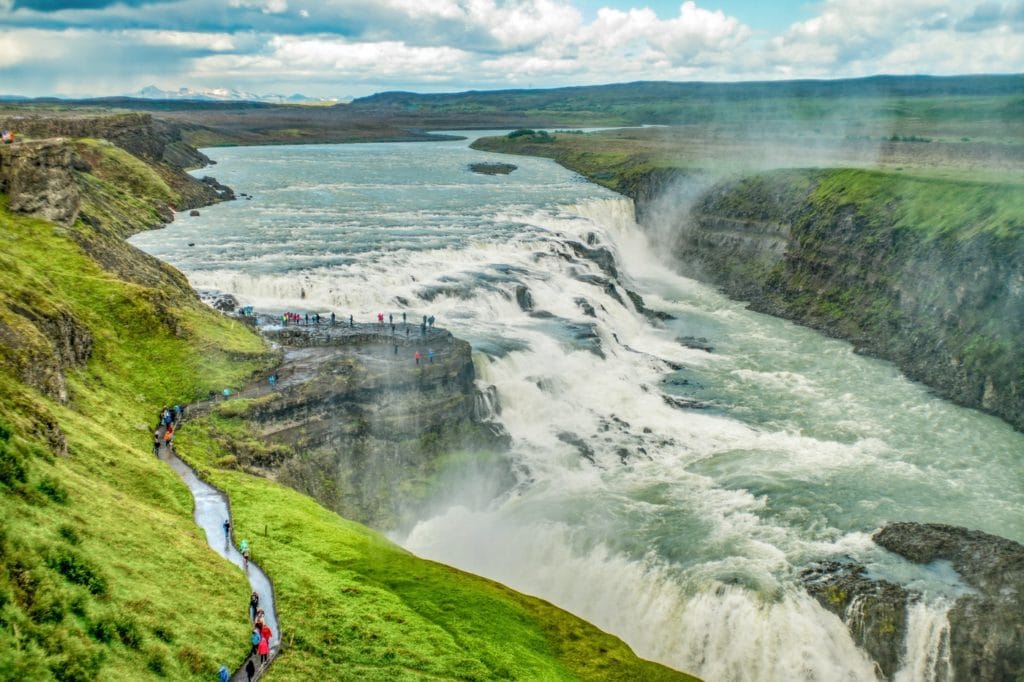The Snæfellsnes peninsula has some of the most diverse landscapes in Iceland, with waterfalls, caves, black and yellow beaches, cliffs, mountains, lava fields, and much more, as well as the Snæfellsjökull glacier.
On the way to Snæfellsnes, a unique oval-shaped crater known as Eldborg rises 60 m from the lava field around it. It’s 200 m from side to side and you can walk right up the crater walls. Eldborg means Fire Castle, and its picturesque shape explains the name – it looks like castle walls shaped by the fiery lava flow below.
Close to Eldborg are the stunning basalt columns of Gerðuberg cliffs. Basalt columns are hexagonal formations formed if volcanic basalt cools rapidly. Gerðuberg is easy to spot from the road.
Arnarstapi is a picturesque little fishing village which is more or less completely abandoned in the wintertime but fills up with fishermen and travellers in the summertime. There are some incredible rock formations by the harbour and various species of birds nest there in the summer. A short walk from there, there’s a huge sculpture of half-troll Bárður Snæfellsás. From the sculpture, it’s a pleasant, easy 2,5km hike along the shore to Hellnar, the next village where you can visit the Baðstofa cave.
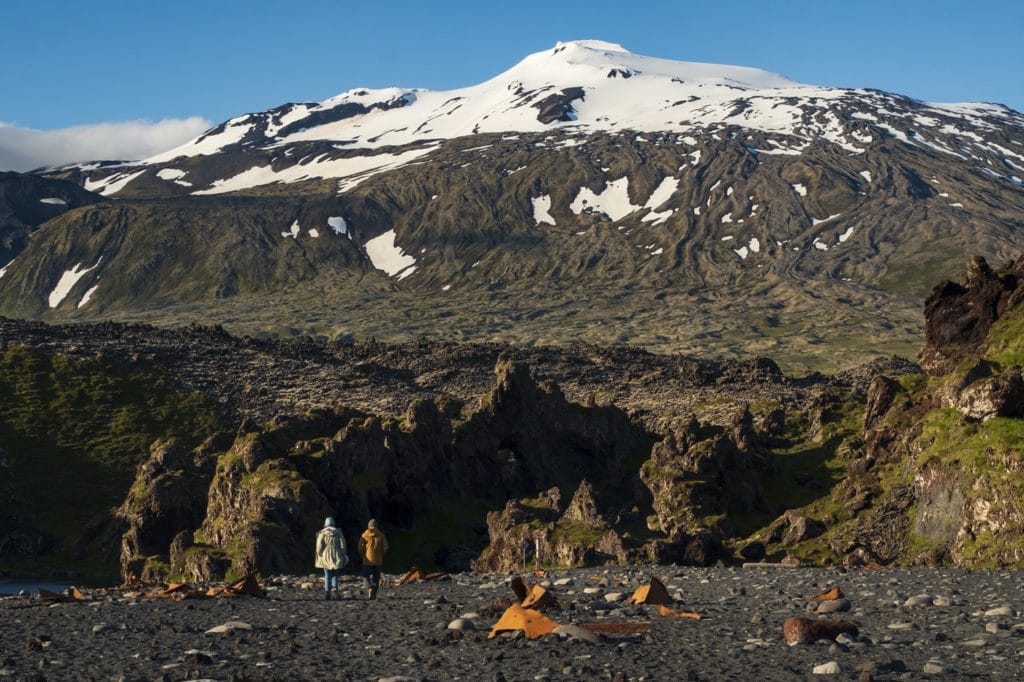
Around this time, you’re getting close to Snæfellsjökull glacier. Underneath the glacier’s ice is an ancient volcano, which last erupted 1,800 years ago. The crater of the Snæfellsjökull volcano is famously the starting point of Jules Verne’s Journey to the Centre of the Earth, through which the team enters the Earth’s hollow centre. It’s also the titular glacier from Halldór Laxness’s Under the Glacier and rumoured to be a favoured landing spot for aliens. Most importantly, it’s stunning to look at.
Within Snæfellsjökull National Park, you will find Vatnshellir cave. You need a guide to go in but it’s well worth planning ahead. The 45-minute tour takes you about 35 m underground where you will see amazing colours and rock formations.
You may have heard of the black sand beaches of Vík. Well, Djúpalónssandur is similar, but different. It’s a black beach, but full of little black pebbles instead of sand. The pebbles have been eroded by the ocean until they’re smooth and round and are also called the Pearls of Djúpalón.
PLEASE NOTE: Be careful and don’t go too close to the water there. There is a powerful rogue wave which can be dangerous, even fatal.
You might recognise Mt. Kirkjufell as a scene-stealer from the hit TV show Game of Thrones but if not, it’s also gained some Internet fame lately for being one of the most beautiful mountains in the world. It’s hard to disagree – it is pretty perfect, with its distinctive shape and ocean on three sides. The pictures speak for themselves.
The historic village of Stykkishólmur is one of Iceland’s most charming villages, full of colourful old wooden houses that give it a timeless feel. The Norwegian House, a local folk museum, gives you insight into everyday life through the ages. Be sure to check out the Narfeyrarstofa restaurant which offers a wide selection of local dishes.
The harbour is nice to visit, too. You can walk to the top of the Súgandisey hill and enjoy the view of the town. You can also go on a cruise from the harbour to explore Breiðafjörður bay with its countless islands or take the ferry to Flatey island where you can even spend the night.



